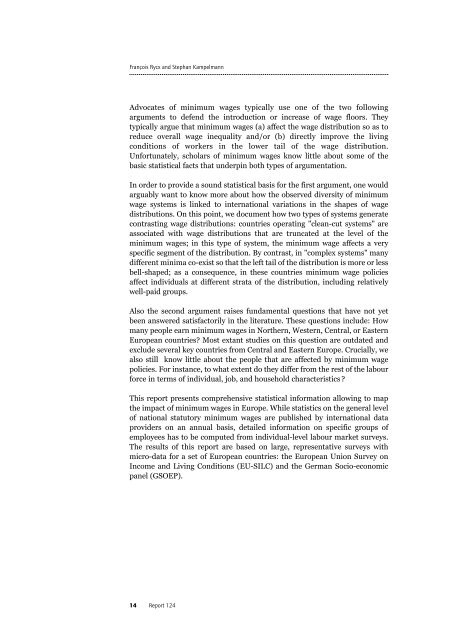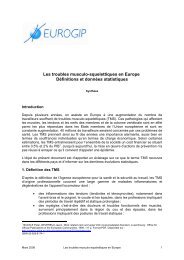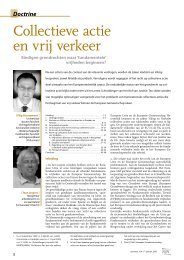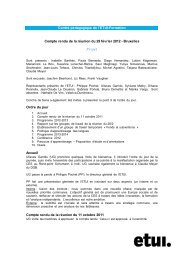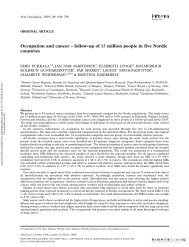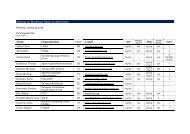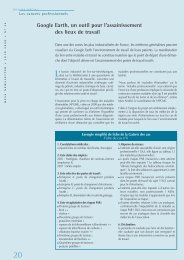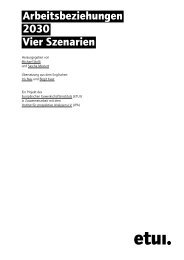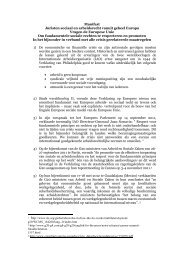Who earns minimum wages in Europe - European Trade Union ...
Who earns minimum wages in Europe - European Trade Union ...
Who earns minimum wages in Europe - European Trade Union ...
Create successful ePaper yourself
Turn your PDF publications into a flip-book with our unique Google optimized e-Paper software.
François Rycx and Stephan Kampelmann<br />
Advocates of <strong>m<strong>in</strong>imum</strong> <strong>wages</strong> typically use one of the two follow<strong>in</strong>g<br />
arguments to defend the <strong>in</strong>troduction or <strong>in</strong>crease of wage floors. They<br />
typically argue that <strong>m<strong>in</strong>imum</strong> <strong>wages</strong> (a) affect the wage distribution so as to<br />
reduce overall wage <strong>in</strong>equality and/or (b) directly improve the liv<strong>in</strong>g<br />
conditions of workers <strong>in</strong> the lower tail of the wage distribution.<br />
Unfortunately, scholars of <strong>m<strong>in</strong>imum</strong> <strong>wages</strong> know little about some of the<br />
basic statistical facts that underp<strong>in</strong> both types of argumentation.<br />
In order to provide a sound statistical basis for the first argument, one would<br />
arguably want to know more about how the observed diversity of <strong>m<strong>in</strong>imum</strong><br />
wage systems is l<strong>in</strong>ked to <strong>in</strong>ternational variations <strong>in</strong> the shapes of wage<br />
distributions. On this po<strong>in</strong>t, we document how two types of systems generate<br />
contrast<strong>in</strong>g wage distributions: countries operat<strong>in</strong>g "clean-cut systems" are<br />
associated with wage distributions that are truncated at the level of the<br />
<strong>m<strong>in</strong>imum</strong> <strong>wages</strong>; <strong>in</strong> this type of system, the <strong>m<strong>in</strong>imum</strong> wage affects a very<br />
specific segment of the distribution. By contrast, <strong>in</strong> "complex systems" many<br />
different m<strong>in</strong>ima co-exist so that the left tail of the distribution is more or less<br />
bell-shaped; as a consequence, <strong>in</strong> these countries <strong>m<strong>in</strong>imum</strong> wage policies<br />
affect <strong>in</strong>dividuals at different strata of the distribution, <strong>in</strong>clud<strong>in</strong>g relatively<br />
well-paid groups.<br />
Also the second argument raises fundamental questions that have not yet<br />
been answered satisfactorily <strong>in</strong> the literature. These questions <strong>in</strong>clude: How<br />
many people earn <strong>m<strong>in</strong>imum</strong> <strong>wages</strong> <strong>in</strong> Northern, Western, Central, or Eastern<br />
<strong>Europe</strong>an countries? Most extant studies on this question are outdated and<br />
exclude several key countries from Central and Eastern <strong>Europe</strong>. Crucially, we<br />
also still know little about the people that are affected by <strong>m<strong>in</strong>imum</strong> wage<br />
policies. For <strong>in</strong>stance, to what extent do they differ from the rest of the labour<br />
force <strong>in</strong> terms of <strong>in</strong>dividual, job, and household characteristics ?<br />
This report presents comprehensive statistical <strong>in</strong>formation allow<strong>in</strong>g to map<br />
the impact of <strong>m<strong>in</strong>imum</strong> <strong>wages</strong> <strong>in</strong> <strong>Europe</strong>. While statistics on the general level<br />
of national statutory <strong>m<strong>in</strong>imum</strong> <strong>wages</strong> are published by <strong>in</strong>ternational data<br />
providers on an annual basis, detailed <strong>in</strong>formation on specific groups of<br />
employees has to be computed from <strong>in</strong>dividual-level labour market surveys.<br />
The results of this report are based on large, representative surveys with<br />
micro-data for a set of <strong>Europe</strong>an countries: the <strong>Europe</strong>an <strong>Union</strong> Survey on<br />
Income and Liv<strong>in</strong>g Conditions (EU-SILC) and the German Socio-economic<br />
panel (GSOEP).<br />
14 Report 124


